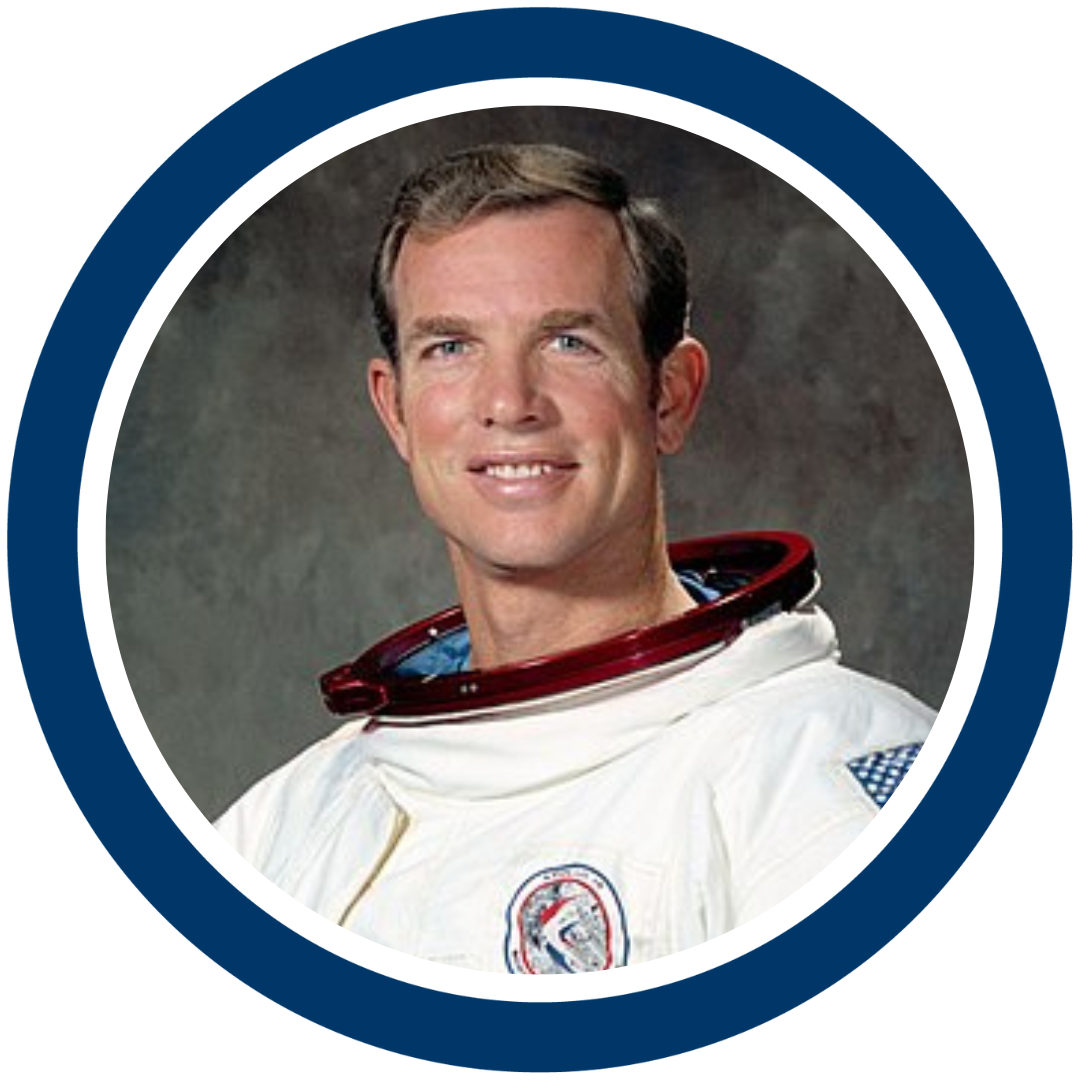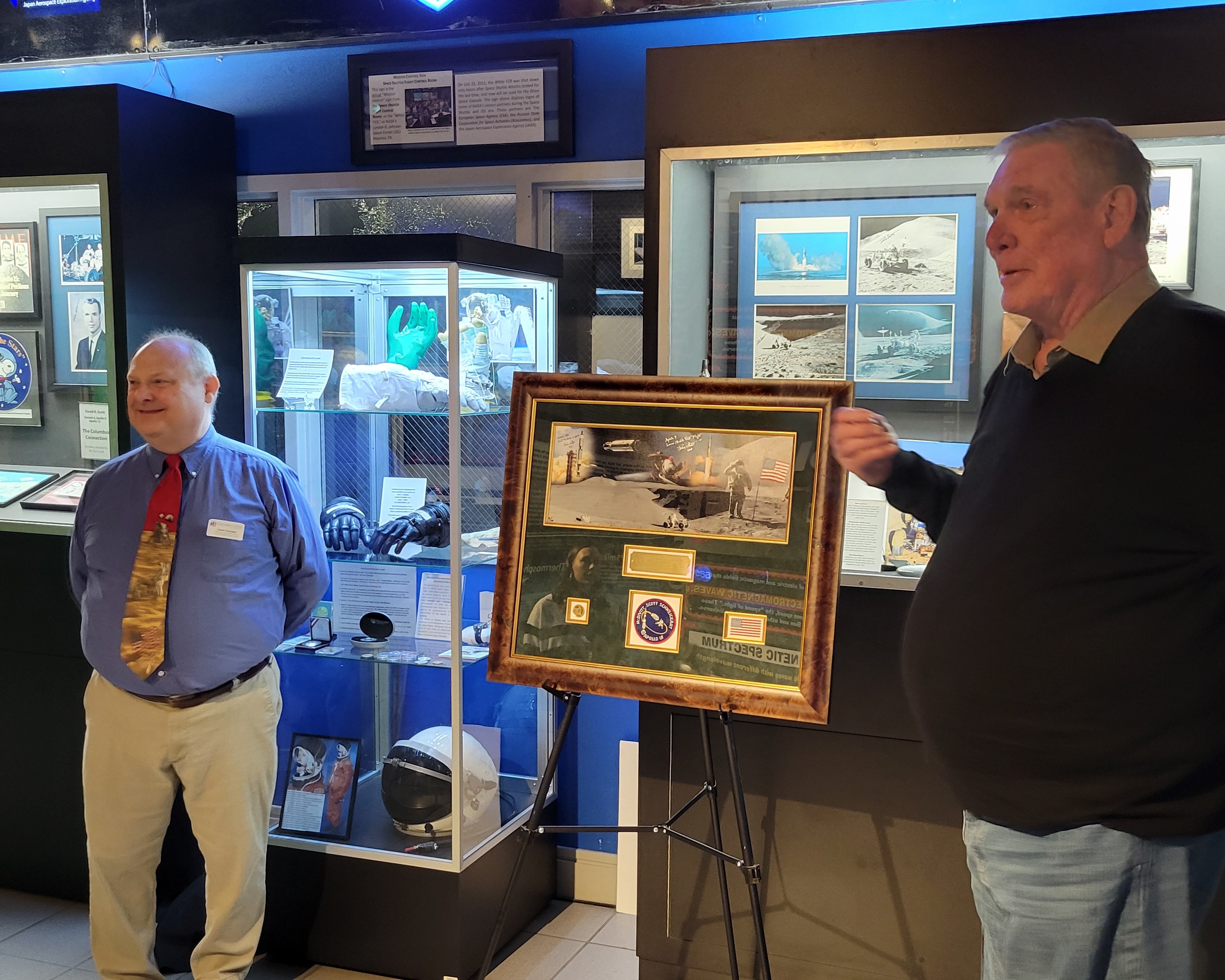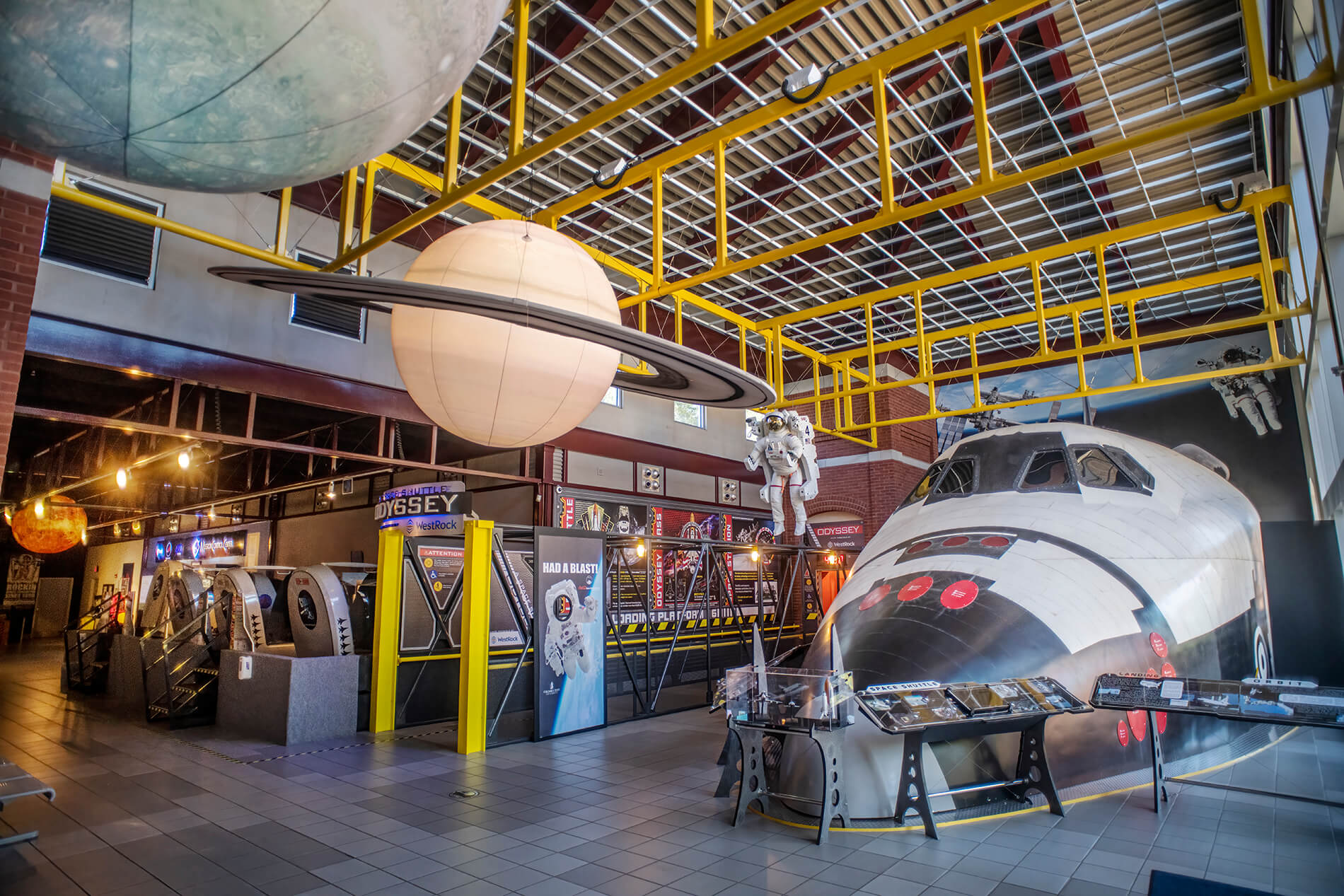Coca-Cola Space Science Center expands Gemini-, Apollo-era space collection
February 6, 2024

Already touting one of the most extensive collections of space artifacts in the Southeast, Columbus State University’s Coca-Cola Space Science Center received a new donation of aerospace memorabilia on Saturday, Feb. 3.
The donation comes on behalf of Gemini- and Apollo-era astronaut Dr. David Scott, who after serving on the Gemini 8, Apollo 9 and Apollo 15 missions, was director of NASA’s Armstrong (then Dryden) Flight Center. Scott, now 91, is one of only 12 humans to date to have walked on the moon. During his aerospace career, he collectively logged 546 hours and 54 minutes in space, of which 20 hours and 46 minutes were in extravehicular activity.
 Scott’s brother, Tom, presented the three new pieces to the center’s collection. They
included:
Scott’s brother, Tom, presented the three new pieces to the center’s collection. They
included:
- a golden medallion flown aboard Gemini 8 in 1966. During that mission, Scott and Command Pilot Neil Armstrong performed the first successful docking of two vehicles in space.
- a mission patch flown aboard Apollo 9 in 1969. During that mission, Scott was instrumental in completing the first comprehensive Earth orbital qualification and verification test of a fully configured Apollo spacecraft.
- a U.S. flag carried in the Oxygen Purge System during three days of extravehicular activity (EVA) excursions during Apollo 15 in 1971. The mission, which Scott commanded, was the first extended scientific exploration of the moon, doubling the lunar stay time of previous flight and utilizing the first Lunar Roving Vehicle to explore the Hadley Rille and the Apennine Mountains.
“My brother [David] is so favorable of this facility because one of the things they
do is educate the youth about the importance and significance of space exploration,”
Tom Scott said. “This is one of the finest [centers of its kind] in Georgia and the
Southeast.”

Tom Scott (right), brother of astronaut David Scott, pictured with Coca-Cola Space Science Center Manager of the Challenger Learning Center Scott Norman (left), as Scott explains the historic significance of the newest additions to the center's collection.
The Scotts have loaned and donated items to the Coca-Cola Space Science Center since
2011. Those form a significant portion of the center’s 300-plus NASA artifacts documenting
the Gemini, Apollo and Space Shuttle programs. Scott noted that the items in this
mini-collection are one of only 10 such sets. Because of their unique and rare qualities,
center professionals explained that single items in their David Scott artifact collection
have been appraised at $25,000 or more in value. Some of the collection's most distinctive
artifacts include moon rocks, lunar surface photos, builders' models of NASA spacecraft
and other items that have traveled with Scott and other astronauts in space.
ABOUT THE COCA-COLA SPACE SCIENCE CENTER
 The Coca-Cola Space Science Center has been inspiring visitors of all ages to look to the stars since opening in 1996.
As Georgia’s only science center and museum facility dedicated to providing experiences
for students and public visitors in astronomy and space science, its galleries, aerospace
artifacts and science education programs have fostered an appreciation for science
and technology, as well as advanced scientific literacy throughout our local and academic
communities.
The Coca-Cola Space Science Center has been inspiring visitors of all ages to look to the stars since opening in 1996.
As Georgia’s only science center and museum facility dedicated to providing experiences
for students and public visitors in astronomy and space science, its galleries, aerospace
artifacts and science education programs have fostered an appreciation for science
and technology, as well as advanced scientific literacy throughout our local and academic
communities.
Outside its galleries, cornerstones of Coca-Cola Space Science Center’s programming include its Omnisphere Theatre planetarium and its Westrock Observatory. The planetarium includes a full-dome digital projection system frequently featuring documentaries and constellation-mapping events. The WestRock Observatory is one of Georgia’s premier public observatories and home to a research-grade telescope. Complementing it and the center’s stargazing programs is a fleet of over 20 portable telescopes, a portable planetarium system, a van for providing mobile programs, and a remotely controllable solar observatory.
An outreach program of the university’s College of Education & Health Professions, the Coca-Cola Space Science Center serves as a training site for Columbus State students pursuing degrees that lead to careers in the sciences and science education. CSU alumni who have served in the center’s educational program are now employed at NASA, Teledyne, The Planetary Sciences Institute, Axiom Space and Blue Origin — to name a few.
For more information about the Coca-Cola Space Science Center, visit ccssc.org.
Media contact:
Michael Tullier, APR, Executive Director of Strategic Communication + Marketing, Columbus
State University, 706.507.8729, mtullier@columbusstate.edu